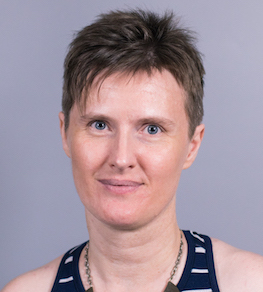It’s no secret that negative assumptions about our potential can sabotage our success. Many of us too easily give up on our personal goals, telling ourselves to “be more realistic,” when this actually often reveals more about our self-confidence than our potential.
Want to stop this from happening? Mindfulness offers a great way forward.
“Mindfulness practice helps us to notice the negative bias that our mind has,” says Henna Inam in her LinkedIn Learning course, Mindfulness Practices. “Instead of reacting to external events through our amygdala—the fight-or-flight center of our brain—we can respond more calmly through our prefrontal cortex.” Since the prefrontal cortex is the rational thinking part of our brain, mindfulness practice can actually change how our brains respond.
Here are two ways in which simple mindfulness practice techniques can re-program your mind for success, when you commit to them.
Avoid brain hijacks by reprogramming your mindset:
By adopting the simple act of controlled breathing, we trigger the release of noradrenaline—a neurotransmitter that, in response to stress or excitement, can cause our heart to beat more rapidly and our pupils to dilate. In her LinkedIn Learning course Mindfulness Practice, Henna Inam explains that controlled breathing can help us to stop reacting to external events with a fight or flight response—which, when we have lower self-esteem, encourages flight. “Instead of reacting to external events through our amygdala, which is the fight or flight center of our brain,” says Inam, “we can respond more calmly through our prefrontal cortex. That’s the rational thinking part of our brain.” Inam adds that mindfulness practice actually changes our brain’s physiology, so that it is less susceptible to being hijacked.
One simple mindfulness practice from Inam’s course starts with sitting comfortably in a chair with your hands resting lightly on your thighs. In a calming voice, Inam guides us through a breathing technique, before encouraging us to let our awareness rise up our body, starting with the feet and ending with the crown, releasing stress wherever we feel it. The full, guided practice (of which this is just a part) can be found via LinkedIn Learning, here.
This practice can actually shrink your amygdala, says Inam, causing the prefrontal cortex to grow bigger. In other words, you’re actually rebuilding your brain and the negative bias it holds.
Rebuild your neural pathways for success:
It is all too easy to give up on life-changing goals and projects when we slowly—or quickly—lose faith in them. Sometimes, we begin a project with a great sense of ambition, before sabotaging it, as if we’ve perceived the truth. More often than not, this bias has little to do with reality, and can inhibit the sense of mastery that has been found to be a predictor of success.
One of the biggest reasons that we fail, says Inam, is because our mind ignores information that is outside of our belief system—this is called cognitive dissonance. “We don’t know what we don’t know,” Inam says. “Our mindsets, our behaviors, are developed over time through millions of thoughts and emotions that we’ve experienced.” As thoughts and emotions repeat, they create ever-deeper neural pathways, says Inam, adding that these create our belief system and our mindset, and this impacts our behavior. What’s more, since many of our beliefs were established when we were young, we’re not even consciously aware of them. The result? They can affect us more deeply and seem like fact.
One way to help combat this is to practice mindful non-judgment.
As part of Inam’s mindfulness practice in her LinkedIn Learning course, she encourages us to watch our thoughts without judgment: First, she relaxes us with a mindfulness breathing technique that puts us into a calm, receptive state. When thoughts start entering your mind—for example, a meeting you are dreading—label each thought with as little judgment as you can (e.g. “Meeting,” or “Meeting with Sam,”) and then release it. As more thoughts start entering, label them accordingly before letting them go. For the full, more impactful mindfulness practice, check out Inam’s full, guided practice at LinkedIn Learning.
When we watch our thoughts without judgment, Inam explains, we notice mindsets we couldn’t see before. “This gives us more choice about whether to hold onto these beliefs or not,” says Inam, who adds that these techniques can help to develop our emotional intelligence.
I recommend checking out Henna Inam’s full course, Mindfulness Practices, at LinkedIn Learning, which includes several more very helpful practices besides the ones I’ve mentioned here. By re-building our neural pathways and reprogramming our mindsets, mindfulness practice can actually change the way we think, for the better. If we commit to such practice daily, we can create a sense of mastery over our lives—one that can bring us the success we always dreamed of.
—Star Williams, content writer
______________________________________________________________
I recommend the full Mindfulness Practices course by Henna Inam, which you can find here.
Image credit: “Mindfulness” by darraghoconnor12 is licensed under CC BY-SA 2.0


